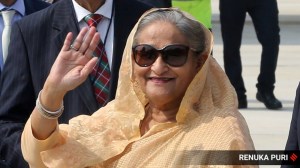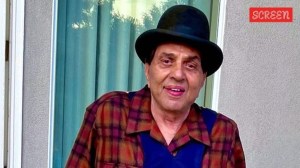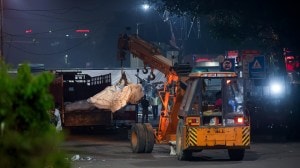It took a Rath Yatra to shatter Idar
IDAR (SABARKANTHA), JULY 31: A hundred and fifty people left homeless. Loss of property worth about Rs 1 crore. Families driven from thei...

IDAR (SABARKANTHA), JULY 31: A hundred and fifty people left homeless. Loss of property worth about Rs 1 crore. Families driven from their homes, living on food from madrasas 15 days after communal violence broke out here. And worst of all, a peaceful town riven by large-scale communal violence. That is the aftermath of Idar’s first Rath Yatra, held on July 14.
Permission for the Rath Yatra was given by the authorities in violation of government guidelines. A mamlatdar allowed the Rath Yatra without informing the district collector, the sub-divisional magistrate or the district superintendent of police. Only the local deputy superintendent of police was informed.
This despite the fact that the town had seen scuffles after the raising of communal slogans during the procession of some Kargil martyrs. And that the killing of a woman had been given a communal twist by some local leaders.Collector Manoj Agarwal says he learnt that a Rath Yatra had been held only when the violence broke out. He says thattechnically the mamlatdar was not wrong in allowing the procession, as only guidelines, not laws, had been violated. But, he says that, given the recent incidents, the mamlatdar should have informed his higher-ups.
Permission was sought and granted just a day before the Yatra, which was allowed even though some respectable citizens had objected. Abdulsattar Memon, a member of the local Muslim Relief Committee, says, “The mamlatdar gave in to the demands of the VHP.”
The two communities blame each other for the violence. Minorities allege that the Yatra and violence was planned by the newly formed Krantiveer Samiti, comprising of local Hindu fundamentalists. Others, including a section of the police, said that the first stone was thrown from the Mansuri mosque where the procession ended in the evening. The collector, however, maintained that the violence was spontaneous. “The passions were inflamed due to some past enmity.”
And police rule out that the woman’s death had anything to do with theoutbreak. DSP Samsher Singh said police was sure the killing had no communal motive.
But one thing is certain. When the bodies of two soldiers of the district who died in the Kargil conflict were being taken in procession for cremation, religious posters of a particular community were torn, and inflammatory slogans were raised in front of places of worship.
That was only the prologue. On the Rath Yatra day, violence continued late into the night. More than 70 shops were burnt or looted. However, nobody was killed, though many people were hurt in stone throwing.
Police action has followed. But members of the minority community said there is political interference. They also alleged, that on the Rath Yatra day, police were clearly abetting the rioters, encouraged by the local DySP.





- 01
- 02
- 03
- 04
- 05


























